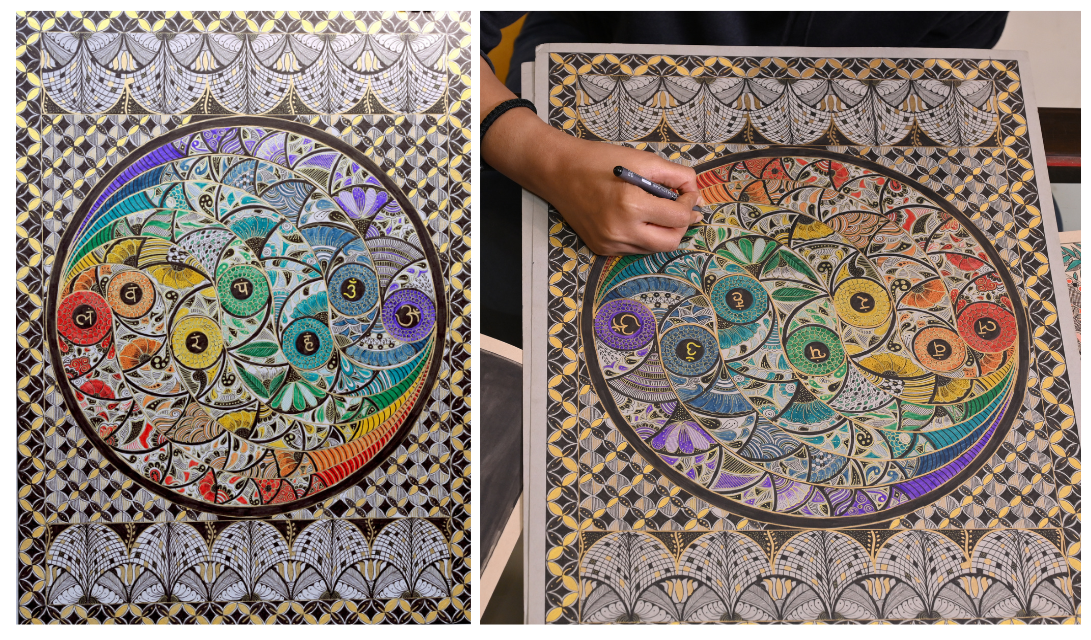Across centuries, cultures, and civilizations, one truth has remained constant: art has always been more than expression. It has been devotion. A whisper to the unseen. A form of prayer that doesn’t need language but carries energy.
From cave walls to temple ceilings, from sacred scrolls to silent mandalas—spirituality and art have never been separate. One creates, the other consecrates. One moves the hand, the other moves the soul.
At Kasshi, this truth is not a concept. It is the foundation of every creation.
Art as Offering, Not Output
In the ancient Indian tradition, creating art was never about aesthetics alone. It was about alignment—with self, with cosmos, with consciousness. A sculpture wasn’t just stone. A miniature painting wasn’t just pigment. They were vessels of spirit.
The act of creation itself was spiritual. Artists fasted before beginning. They meditated. They chanted. And when they painted, it wasn’t the hand that led—it was intent. The art became an offering, not to the eye, but to something higher.
This sacred approach echoes across Kasshi’s symbolic artworks. Each painting begins in silence, grounded in ritual and intention. It may use folk motifs or mandala patterns, but its soul is ancient. It is not made for display, but to hold space—for transformation, reflection, and inner stillness.
Why Spiritual Art Resonates So Deeply
Spiritual art is not defined by what it looks like—but by how it makes you feel.
You might not understand the symbolism of a certain piece. You may not know its origin. But if it stills your breath, softens your heart, or quiets your mind—then it’s already doing its work.
That’s the essence of spiritual art: it bypasses logic and enters directly into the energetic field. Its geometry, color, rhythm—they’re not design elements, but frequencies. They realign what has been fragmented. They ground what has been restless.
From Buddhist thangkas to Vedic yantras, from Sufi poetry woven into calligraphy to tribal earth paintings, spiritual art takes many forms—but it shares one language: intention.
This is why people often say, “I don’t know why, but I feel calm around this painting.” Because what you’re responding to isn’t art as decor. It’s art as presence.
The Inner Journey of the Artist
In every tradition—whether it’s Indigenous, Sufi, Taoist, or Vedic—the artist is not just a maker. The artist is a medium. A translator between the seen and the unseen.
This is why, at Kasshi, art is never rushed. It is not produced. It is received.
From elemental series that reflect the five cosmic elements to folk-inspired pieces rooted in ancestral storytelling, every canvas carries emotional texture. The brush moves not to complete—but to converse. With silence. With symbols. With source.
A Shared Field Between Viewer and Art
And then, something beautiful happens. The viewer becomes part of the spiritual loop.
A painting made with devotion finds its way to the one who needs it—sometimes for grounding, sometimes for awakening, sometimes simply for holding space during transition.
It’s no longer a piece of art. It becomes a companion.
This is why spiritual art is so often found in places of reflection—altars, meditation spaces, healing rooms. Not because they “look spiritual,” but because they feel aligned. They carry a kind of silence. A vibration. A still center.
A Return to the Sacred in Everyday Life
In today’s fast-moving world, where the sacred is often separated from the everyday, spiritual art gently reweaves the thread. It says: This too can be holy. This wall. This breath. This moment.
Through symbolic art, our homes begin to feel different. Our thoughts soften. Our pace slows. The external reflects the internal. And slowly, without even trying, life becomes a little more centered.
Because when art is spiritual, it doesn’t just fill space. It reminds you that space itself is sacred.
Let your walls hold more than beauty.Let them hold energy, intention, and quiet transformation.
Explore Kasshi’s symbolic artworks → https://thekasshi.com/artworks



